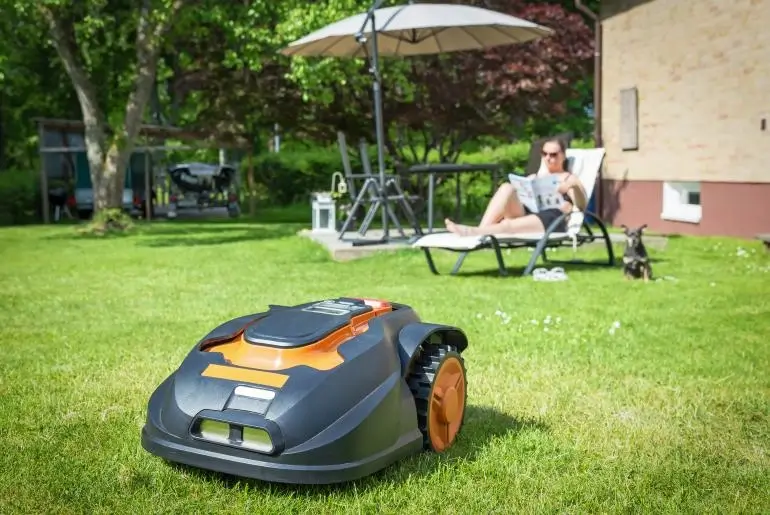Garden tools have long been essential for keeping yards tidy, but home robotics is redefining how we use these tools. Today’s robotic garden tools handle tasks like mowing, trimming, and watering with minimal human effort. They blend efficiency with smart tech, making yard work easier and more accessible for everyone. As technology advances, these robotic solutions are set to become even more integral to home gardening, solving old challenges and opening new possibilities.
The Rise of Robotic Garden Tool for Home Use
From Manual to Automated: A Garden Tool Evolution
For decades, garden tools relied on manual labor or gas-powered engines. Rakes, shears, and push mowers required physical strength and time. Now, robotic garden tools like autonomous lawn mowers and robotic hedge trimmers change this. They operate on pre-set schedules, using GPS or boundary wires to navigate yards without human control. This shift lets homeowners spend less time on chores and more time enjoying their gardens.
Key Robotic Garden Tools Shaping Home Yards
Several robotic garden tools have gained popularity in recent years. Robotic lawn mowers, for example, cut grass in small increments, keeping lawns evenly trimmed year-round. Robotic sprinklers adjust water flow based on weather data, preventing overwatering. Even robotic leaf vacuums and weeding tools exist, targeting specific tasks to reduce manual work. Each tool is designed to handle repetitive or tiring jobs, making home gardening less daunting.

How Robotic Garden Tools Work: Tech Behind the Magic
Navigation and Sensing Tech
Robotic garden tools use advanced sensors to move safely. Most have collision sensors to avoid trees, rocks, or furniture. Some use camera-based vision systems to detect obstacles in real time. GPS-enabled models map yards to create efficient paths, ensuring no area is missed. Boundary wires, often used for mowers, define the tool’s working area, preventing it from wandering into flower beds or driveways.
Smart Connectivity for Easy Control
Nearly all modern robotic garden tools connect to smartphone apps. Users can start, stop, or adjust schedules from anywhere. Apps also send alerts—like when a tool needs charging or encounters a problem. Some tools even share data, such as how much grass was cut or how much water was used. This connectivity makes managing garden tools simple, even for those with little tech experience.
Benefits of Choosing Robotic Garden Tools
Time and Effort Savings
The biggest advantage of robotic garden tools is time saved. A robotic mower can handle a medium-sized lawn daily without supervision. This eliminates weekends spent pushing a mower or trimming hedges. For busy homeowners or those with mobility issues, this freedom is life-changing, letting them maintain beautiful yards without physical strain.
Efficiency and Precision
Robotic garden tools work with consistent precision. Robotic mowers cut grass to the same height every time, avoiding uneven patches. Smart sprinklers use weather forecasts to water only when needed, saving water and reducing utility bills. Even robotic weeders target only unwanted plants, avoiding damage to flowers or vegetables. This precision leads to healthier gardens and lower maintenance costs.
Eco-Friendly Operation
Most robotic garden tools run on rechargeable batteries, not gas. This reduces carbon emissions and eliminates the need for fuel storage. Battery-powered tools are also quieter than gas models, making them neighbor-friendly. As more tools adopt solar charging or energy-saving modes, their environmental impact will shrink further, aligning with home gardeners’ growing focus on sustainability.
Future Trends: What’s Next for Robotic Garden Tools?
AI Integration for Smarter Garden Care
Artificial intelligence (AI) will make robotic garden tools more adaptable. Future models may recognize different plant types, adjusting care accordingly. For example, a robotic trimmer could cut hedges to specific shapes or avoid delicate plants automatically. AI could also let tools learn user preferences—like how short to cut grass in summer vs. winter—making them more personalized.
Improved Battery Life and Charging
Battery life remains a focus for innovation. Current robotic garden tools typically run for 1-3 hours before recharging. Future models may use longer-lasting solid-state batteries, extending run time to 5+ hours. Wireless charging pads embedded in yards could let tools recharge without being moved, ensuring they’re always ready to work. Solar panels on tool bodies might even provide continuous power during the day.
Expansion to More Garden Tasks
Right now, robotic garden tools focus on common chores, but future tools will cover more tasks. Robotic pruning shears for fruit trees, for example, could trim branches with precision. Robotic soil testers might analyze soil quality and suggest fertilizer adjustments. Even robotic plant transplanters could help homeowners rearrange gardens with minimal effort. This expansion will make robotic tools a one-stop solution for all home gardening needs.
Overcoming Challenges: Making Robotic Garden Tools Accessible
Cost and Affordability
While robotic garden tools offer long-term savings, their upfront cost can be high. However, prices are dropping as demand grows. Entry-level robotic mowers now cost less than many gas-powered models. Brands also offer payment plans, making these tools accessible to more homeowners. As production scales up, costs will likely fall further, opening the market to even more people.
Adapting to Different Yard Sizes and Types
Early robotic garden tools worked best for flat, simple yards. Now, models handle slopes, uneven terrain, and complex layouts. Tools with larger wheels tackle hills, while flexible boundary systems fit irregularly shaped yards. This adaptability ensures robotic garden tools work for nearly any home, regardless of yard size or design.
Robotic garden tools are no longer a luxury—they’re a practical solution for modern home gardening. They save time, reduce effort, and help create healthier yards. As AI, battery, and connectivity tech advance, these tools will become even smarter and more versatile. For homeowners looking to simplify garden care, robotic garden tools are the future—and the future is already here. Whether you have a small balcony garden or a large backyard, there’s a robotic tool ready to make your gardening journey easier and more enjoyable.

